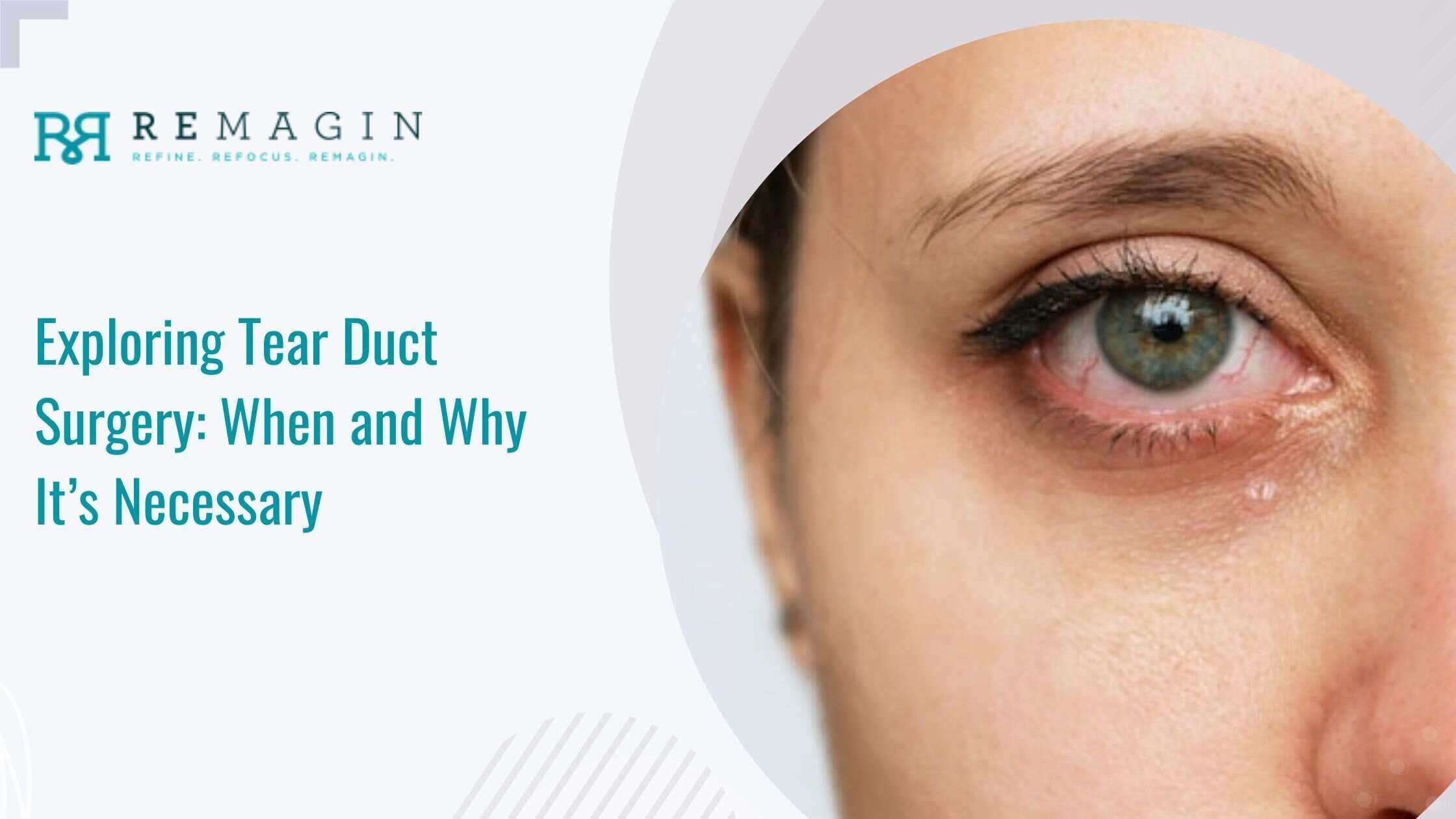



Tear ducts play a crucial role in maintaining eye health by draining excess tears into the nasal cavity, preventing them from accumulating on the surface of the eyes. However, when tear ducts become blocked, it can lead to various discomforts and even infections. Tear duct surgery offers a reliable solution for individuals experiencing chronic blockages or infections that cannot be resolved through non-surgical treatments. Let's explore when and why tear duct surgery, specifically blocked tear duct surgery, is necessary and how it can help restore normal tear drainage.
Tear ducts, also known as nasolacrimal ducts, serve the important function of draining tears from the eye's surface into the nose. This system allows excess moisture and debris to be flushed out, keeping the eyes clean and healthy. When these ducts are blocked, tears can accumulate on the eye’s surface, causing irritation and increasing the risk of infections.
Several factors can cause tear duct blockages:
Common symptoms of a blocked tear duct include excessive tearing, frequent eye infections, swelling near the tear ducts, and sometimes pain or redness in the eyes. If left untreated, these symptoms can worsen, causing more severe infections or damage to the surrounding eye tissues.
While some tear duct blockages may resolve on their own or respond to non-surgical treatments like warm compresses, antibiotics, or massage, others require surgical intervention. Tear duct surgery is typically recommended in the following situations:
Specialists usually recommend early intervention to prevent further complications. Addressing the blockage with tear duct surgery can help avoid more severe infections, scarring, and long-term damage to the tear ducts or surrounding structures.
Here are the most common types of blocked tear duct surgery:
A typical tear duct surgery begins with the administration of local or general anesthesia to ensure patient comfort. The surgeon then either makes a small incision near the nose or inserts an endoscope to create a new pathway for tear drainage.
After surgery, patients are given specific care instructions to minimize discomfort and reduce the risk of infection. Common post-surgery tips include:
The recovery period for tear duct surgery varies, but most patients can expect to resume normal activities within a week or two. However, it may take several weeks for the full benefits of the surgery to be felt. Like any surgical procedure, there are potential risks, including bleeding, infection, or scarring, but these complications are rare with modern techniques and experienced surgeons.
At Remagin, we specialize in advanced tear duct surgery to address chronic tear duct blockages effectively. Our team of experienced oculoplastic surgeons uses the latest technology to perform minimally invasive procedures like DCR and balloon catheter dilation, ensuring the best outcomes for our patients.
With a personalized approach to care, Remagin ensures that each patient receives a tailored treatment plan to address their specific condition. Whether you're dealing with recurring eye infections or chronic tearing, we offer comprehensive care to guide you through the treatment and recovery process. Our state-of-the-art facilities and experienced team make us a leading choice for those seeking blocked tear duct surgery.
If you're experiencing persistent eye infections, excessive tearing, or discomfort due to a blocked tear duct, tear duct surgery might be the solution you need. Contact us today to learn more about your options for tear duct treatment and how we can help you achieve long-term relief.